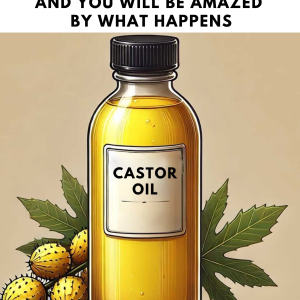
The kitchen may be where we cook and connect — but over time, it’s also where grease quietly settles and builds up. If you’ve avoided deep-cleaning your cabinets for a few years, chances are they’ve developed a stubborn, sticky film that dulls their shine and attracts more dirt.
Don’t worry — you don’t need to remodel your entire kitchen. With a focused, step-by-step approach and a few common supplies, you can revive even the greasiest cabinet surfaces.
Why Do Cabinets Get So Sticky in the First Place?

The culprit? A mix of cooking oil, airborne particles, steam, and dust that slowly combine into a tacky residue. It’s not just unsightly — it can also trap bacteria and odors. Regular surface wiping might delay the buildup, but if it’s been years, you’ll need more than a damp cloth.
Supplies You’ll Want on Hand
For a successful deep-clean, gather the following:
- White vinegar
- Baking soda
- Mild dish soap or gentle degreaser
- Microfiber cloths and non-abrasive sponges
- Soft-bristle brush or old toothbrush
- Warm water
- Optional: gloves, essential oils (for scent), commercial degreaser
Tip: Always spot-test your solution on a hidden corner first — especially for wood or painted finishes.
Before You Start: Prep the Space

- Empty the cabinets completely
- Remove handles and knobs, if possible
- Lay down towels or sheets to protect the countertop and floor
- Crack a window if you’re using stronger cleaners
Having a clear, organized workspace will make the cleaning process faster and easier.
Step-by-Step: From Grime to Gleam
- Mix equal parts warm water and white vinegar in a bowl or spray bottle.
- Dampen a microfiber cloth and wipe down each cabinet door and frame.
- For sticky areas that resist wiping, make a paste with baking soda and a little water. Apply gently with a soft brush, scrubbing in circles.
- Rinse your cloth often, and repeat as needed.
- Finish with a clean damp cloth to remove any residue, then dry thoroughly.
Prefer Natural Solutions?

You’re not alone. Natural degreasers can be surprisingly effective:
- Baking soda + vegetable oil (yes, oil!) makes a gentle scrubbing paste
- Straight white vinegar sprayed onto grease can help loosen thick buildup
- A few drops of lemon or tea tree oil can freshen the smell while you clean
Just let the paste or spray sit for a few minutes before wiping.
When It’s Time to Go Pro
Sometimes, grime wins — and that’s when a commercial degreaser comes in handy. Choose one that’s safe for your cabinet’s material (especially if it’s wood or laminate), and always follow the product instructions carefully. Rinse thoroughly afterward to avoid leaving behind any chemical residue.
Keeping Cabinets Cleaner, Longer

Once your cabinets are back to their best, don’t let them slip again. Here’s how to maintain the clean:
- Wipe down doors weekly with warm soapy water or diluted vinegar
- Use your stove’s hood or fan every time you cook
- Install a grease-catching splatter guard near fry-heavy areas
- Deep-clean every 4–6 months, or seasonally
Final Thoughts
Greasy, sticky cabinets don’t have to be permanent. With a bit of time and the right approach, you can strip away years of grime and restore the heart of your kitchen. Clean cabinets not only look better — they also make your kitchen feel fresher, brighter, and more inviting.




